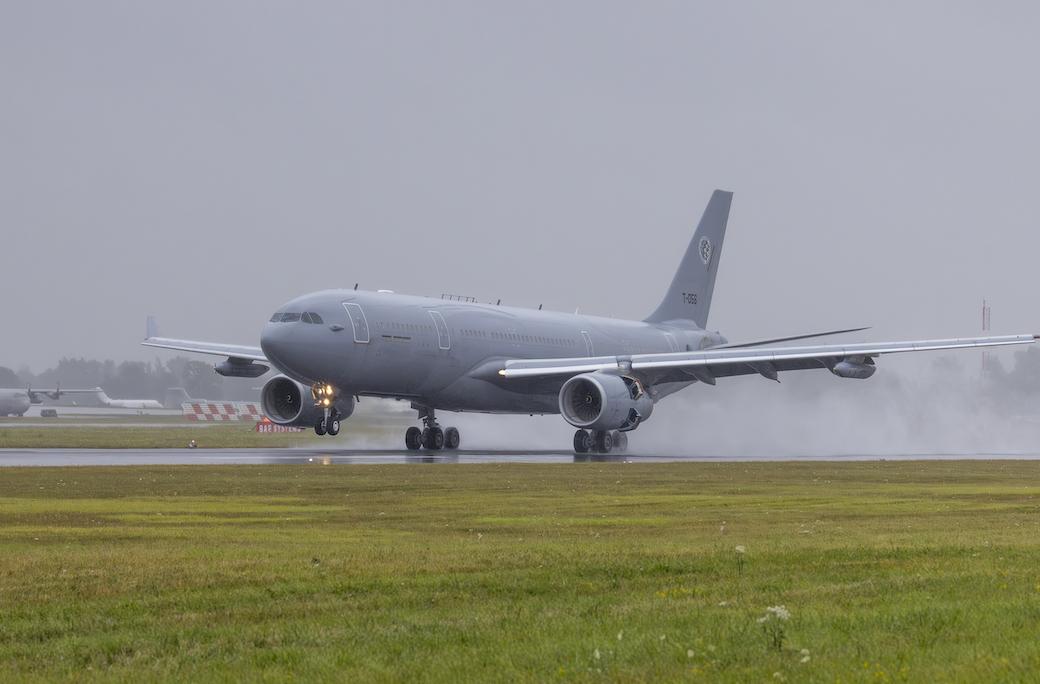
HUELVA, Spain—Airbus has begun de-risking work to develop a second-generation Multi-Role Tanker Transport (MRTT) version based on its A330neo.
The efforts underway are geared to paving the way for the OEM to transition from the existing A330-200ceo model to the reengined, re-winged A330neo, potentially by the turn of the decade.
Much of the focus of the de-risking studies, says Maria Angeles Marti, Airbus Defense and Space’s head of tanker and derivatives, is around whether the Neo’s new wing can accommodate hose and drogue pods for refueling probe-equipped combat aircraft.
“The wings [of the Neo] are a little more flexible and the engines are different, but this is one of the activities we are running today, and we have a high level of confidence,” Marti says.
When the A330 was first developed in the 1980s and into the ’90s, it shared the same wing as the four-engine A340. Airbus was able to hang the hose-drogue unit from the pylon where an A340 outer engine would have been fitted. But that option does not exist on the re-winged A330neos.
“With the A330neo, the aircraft will be capable of doing the same task as it does today, but we will be able to bring in all the innovation the [Neo-model] aircraft brings to the commercial market as well because it is more fuel-efficient,” Marti told journalists here on Nov. 21. “It [the Neo] is a natural evolution of our solution.”
She was speaking as Airbus UpNext innovation personnel performed the latest trial in its Auto’Mate program to develop a fully automated refueling capability that could be used for uncrewed aircraft systems (UAS), such as those that may support combat aircraft.
A transition to Neo from Ceo is needed as Airbus plans to halt production of the A330-200ceo, which is now only built to support the MRTT program. The last passenger model A330-200 was delivered to Spanish operator Level in 2019.
Potential MRTT operators still have the option to convert aircraft purchased second hand from the commercial market. But Marti suggests the stock for conversions is dwindling if air forces want aircraft that can be operated for 30 years.
Marti would not confirm which A330neo variant would be developed into the MRTT, but Airbus has never developed an MRTT based on the longer-fuselage A330-300. That model correspondingly has been developed into the A330-900, which suggests the MRTT Neo will be based on the -800neo platform.
Airbus plans to begin marketing the MRTT Neo to potential customers in the near future, Marti says. Airbus already has several sales campaigns as well as for potential top-up orders from existing customers. Some 77 MRTTs have been ordered by customers, with 59 delivered.
Canada is the latest country to procure the MRTT, buying nine A330-200s, eight of which will be converted to the MRTT standard. The ninth will be used as a VIP aircraft.
